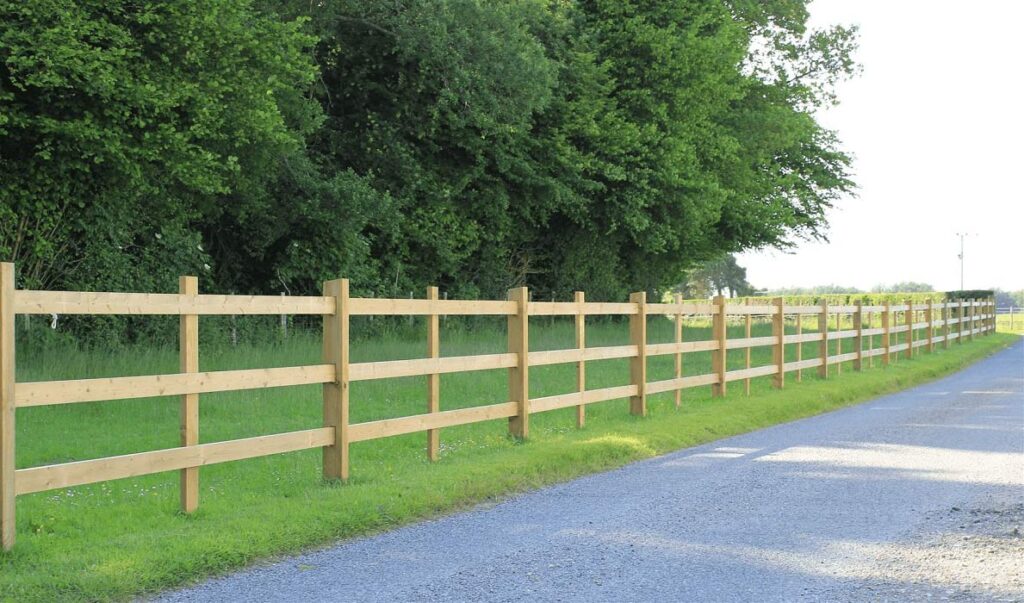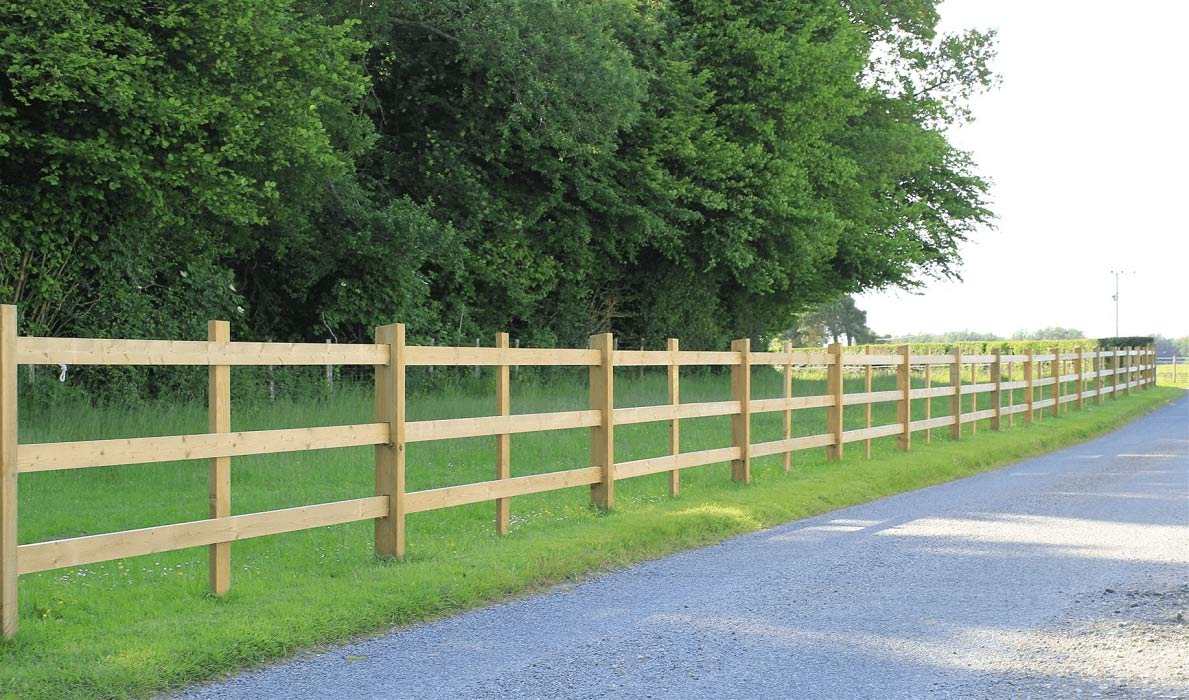
The Best Wood for Post and Rail Fence: A Comprehensive Guide
Choosing the right wood for your post and rail fence is a crucial decision that impacts its longevity, appearance, and overall cost. A post and rail fence, also known as a ranch fence or split rail fence, is a classic and versatile fencing option, often used for agricultural purposes, property demarcation, and aesthetic appeal. Selecting the best wood for post and rail fence involves considering factors such as durability, resistance to decay and insects, availability, and price. This comprehensive guide will explore the various wood types suitable for post and rail fences, providing you with the information needed to make an informed choice.
Understanding the Requirements for Fence Wood
Before diving into specific wood types, it’s essential to understand the key requirements for wood used in post and rail fences. These fences are exposed to the elements year-round, so the wood must be able to withstand rain, sun, snow, and fluctuating temperatures. Furthermore, the wood should resist decay, insect infestation (particularly termites and carpenter ants), and physical damage from livestock or weather events.
- Durability: The wood should be naturally durable or treatable to withstand the elements and resist decay.
- Insect Resistance: Resistance to termites, carpenter ants, and other wood-boring insects is crucial for longevity.
- Strength: The wood needs to be strong enough to support the fence and withstand pressure from animals or environmental factors.
- Cost-Effectiveness: Balancing quality and cost is important to stay within budget.
- Availability: The chosen wood should be readily available in your region to minimize transportation costs and delays.
Popular Wood Choices for Post and Rail Fences
Several wood types are commonly used for post and rail fences, each with its own advantages and disadvantages. Let’s examine some of the most popular options:
Pressure-Treated Pine
Pressure-treated pine is one of the most widely used materials for post and rail fences due to its affordability and availability. The pressure treatment process involves injecting chemical preservatives deep into the wood, making it highly resistant to decay and insect infestation. This treatment significantly extends the lifespan of the pine, making it a practical choice for many applications.
Pros:
- Affordable and readily available.
- Highly resistant to decay and insects due to pressure treatment.
- Easy to work with and can be painted or stained.
Cons:
- Can warp or crack over time, especially in extreme weather conditions.
- The chemicals used in pressure treatment can be harmful if not handled properly.
- May require periodic re-treatment to maintain its protective properties.
When using pressure-treated pine, it’s crucial to use the appropriate type for ground contact. Look for pine that is specifically treated for direct burial, as this will ensure it can withstand prolonged exposure to moisture and soil microorganisms. Proper installation, including setting posts in concrete, is also essential for maximizing the lifespan of a pressure-treated pine post and rail fence.
Cedar
Cedar is a naturally durable wood that is highly valued for its resistance to decay and insects. It contains natural oils that act as preservatives, making it an excellent choice for outdoor applications like post and rail fences. Cedar is also aesthetically pleasing, with a reddish-brown color and a distinctive aroma.
Pros:
- Naturally resistant to decay and insects.
- Attractive appearance with a reddish-brown color.
- Dimensionally stable and less prone to warping or cracking than pine.
- Relatively lightweight and easy to work with.
Cons:
- More expensive than pressure-treated pine.
- May require occasional staining or sealing to maintain its color and prevent weathering.
- Can be susceptible to physical damage from livestock or severe weather.
Western Red Cedar is a popular choice for post and rail fences due to its exceptional durability and beautiful grain. However, other cedar species, such as Eastern White Cedar and Atlantic White Cedar, can also be used, depending on availability and cost. Regular inspection and maintenance, including cleaning and applying a protective finish, will help prolong the life of a cedar post and rail fence.
Black Locust
Black Locust is a hardwood known for its exceptional strength and durability. It is naturally resistant to decay and insects, making it an excellent choice for post and rail fences in demanding environments. Black Locust is also environmentally friendly, as it doesn’t require any chemical treatment to achieve its protective properties.
Pros:
- Extremely durable and long-lasting.
- Naturally resistant to decay and insects.
- Strong and able to withstand significant physical stress.
- Environmentally friendly as it requires no chemical treatment.
Cons:
- More expensive than pine or cedar.
- Can be difficult to work with due to its hardness.
- May be less readily available in some regions.
Black Locust is often used for fence posts that are driven directly into the ground, as its natural decay resistance eliminates the need for concrete footings. However, it’s still important to ensure proper drainage around the posts to prevent water from pooling and accelerating decay. A Black Locust post and rail fence can last for decades with minimal maintenance, making it a worthwhile investment for those seeking a long-term fencing solution.
Osage Orange (Hedge)
Osage Orange, also known as Hedge, is another hardwood prized for its exceptional durability and resistance to decay and insects. It is one of the most durable North American woods and has been used for fencing for centuries. Osage Orange is known for its thorny branches and extremely dense wood.
Pros:
- Extremely durable and long-lasting.
- Naturally resistant to decay and insects.
- Very strong and able to withstand significant physical stress.
Cons:
- Very difficult to work with due to its hardness and thorny nature.
- May be less readily available in some regions and can be expensive.
- Thorny branches can pose a safety hazard.
Due to its extreme hardness, Osage Orange requires specialized tools for cutting and shaping. However, its exceptional durability makes it a top choice for situations where longevity is paramount. A post and rail fence constructed from Osage Orange can last for generations, even in harsh environmental conditions.
Factors to Consider When Choosing Wood
When selecting the best wood for post and rail fence, consider the following factors:
- Budget: Determine how much you are willing to spend on the fence.
- Climate: Consider the climate in your area and choose a wood that can withstand the local weather conditions.
- Soil Type: The type of soil can affect the rate of decay. Well-drained soil is less conducive to decay than heavy, clay-rich soil.
- Aesthetics: Choose a wood that complements the surrounding landscape and your personal preferences.
- Maintenance: Consider the amount of maintenance you are willing to perform on the fence. Some woods require more maintenance than others.
- Livestock: If you have livestock, choose a wood that is strong enough to withstand their pressure and potential damage.
Installation and Maintenance Tips
Proper installation and maintenance are crucial for maximizing the lifespan of your post and rail fence, regardless of the wood type you choose.
- Proper Post Spacing: Ensure that the posts are spaced appropriately to provide adequate support for the rails.
- Setting Posts in Concrete: Setting the posts in concrete will provide additional stability and prevent them from shifting over time.
- Using Galvanized Fasteners: Use galvanized nails, screws, or staples to prevent rust and corrosion.
- Applying a Protective Finish: Applying a stain, sealant, or paint can help protect the wood from the elements and prolong its lifespan.
- Regular Inspection and Maintenance: Inspect the fence regularly for signs of damage or decay and make necessary repairs promptly.
- Weed Control: Keep vegetation away from the base of the fence to prevent moisture buildup and promote air circulation.
By following these installation and maintenance tips, you can ensure that your post and rail fence remains in good condition for many years to come. Remember that a well-maintained fence not only enhances the appearance of your property but also provides security and protection for your animals and belongings.
Alternative Materials for Post and Rail Fences
While wood is the traditional choice for post and rail fences, alternative materials are also available. These include:
- Vinyl: Vinyl fences are durable, low-maintenance, and resistant to decay and insects. However, they can be more expensive than wood and may not have the same natural aesthetic appeal.
- Metal: Metal fences are strong and long-lasting but can be prone to rust and corrosion. They may also be less aesthetically pleasing than wood fences.
- Composite: Composite fences are made from a blend of wood fibers and plastic. They are durable, low-maintenance, and resistant to decay and insects. However, they can be more expensive than wood and may not have the same natural appearance.
When considering alternative materials, weigh the pros and cons carefully to determine if they are the right choice for your needs and budget.
Conclusion
Choosing the best wood for post and rail fence requires careful consideration of factors such as durability, insect resistance, cost, and aesthetics. Pressure-treated pine is a popular and affordable option, while cedar offers natural decay resistance and an attractive appearance. Black Locust and Osage Orange are exceptionally durable hardwoods that are ideal for demanding environments. By understanding the characteristics of each wood type and following proper installation and maintenance practices, you can build a post and rail fence that will provide years of reliable service. Ultimately, the best wood for post and rail fence is the one that best meets your specific needs and preferences. Remember to consider your budget, climate, soil type, and aesthetic preferences when making your decision. A well-chosen and properly maintained post and rail fence can add value and beauty to your property for many years to come.
[See also: Fence Installation Guide]
[See also: Types of Wood Fencing]
[See also: How to Maintain Your Wood Fence]

